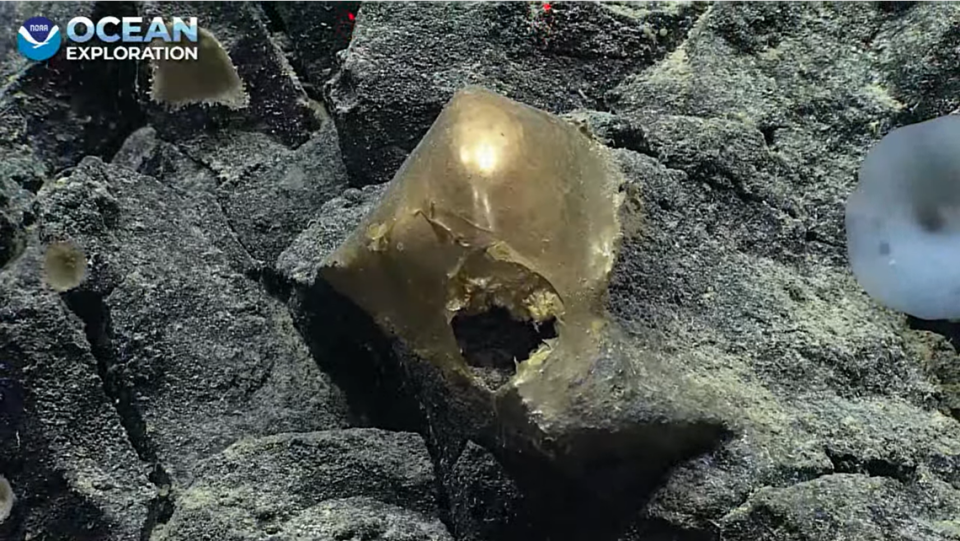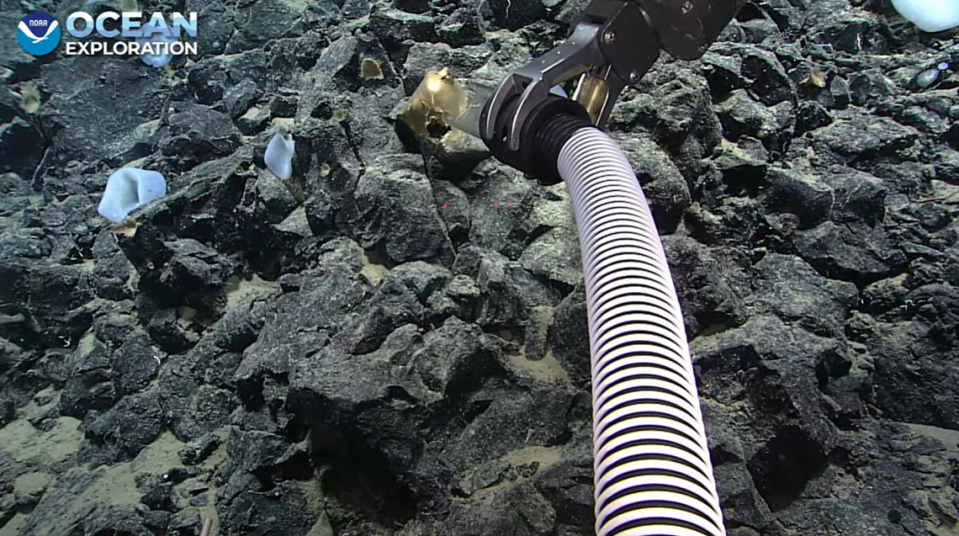A golden egg? Mysterious shiny orb seen on seafloor off Alaska stumps ocean explorers
A team of deep sea explorers visiting an extinct volcano found something resembling a golden egg 250 miles off the coast of southern Alaska.
The discovery was made Wednesday, Aug. 30, as a NOAA Ocean Exploration team recorded video in “the deep abyssal depths of the Gulf of Alaska.”

There, at a depth of about 2 miles, sat a shiny golden orb — with a perplexing hole in it.
“Something tried to get in ... or to get out,” one researcher observed in a live feed.
In the debate that followed, the team made funny references to everything from the X-Files to classic monster movies. It was ultimately decided a sample of the orb was needed to examine its DNA.
However, caution was advised.

“I just hope when we poke it, something doesn’t decide to come out,” one scientist said. “It’s like the beginning of a horror movie.”
A remotely operated arm was deployed to “tickle” the egg, revealing it was delicate to the touch, like skin tissue. It was then gently “suctioned” up a tube for testing in a lab.
The team members offered a few guesses as to what the object might be, including an egg casing or the remains of a sponge.
“When our collective knowledge can’t identify it, it’s something weird,” one team member concluded. “What kind of an animal would make an egg casing like that?”
The dive is part of the Seascape Alaska 5 expedition, which involved the team recording video of areas never before been seen by humans, including some sites nearly 4 miles deep.
Dives started Aug. 24 and will continue through Sept. 15. Viewers can watch a live feed at Oceanexplorer.noaa.gov/okeanos/explorations from 12 p.m. to 9 p.m. EDT. As conditions allow, scientists will explore the Gulf of Alaska, including deep-sea coral and sponge habitats, and geological features like mud volcanoes. Depths will range from 656 feet to 19,685 feet.
11,100-year-old trap proves people lived in Alaska 1,000 years earlier than believed
City of worms that can live 200 years discovered on seafloor off Alaska, NOAA says
Search of sunken WWII battlefield in Pacific finds planes, ships, amphibious vehicles

